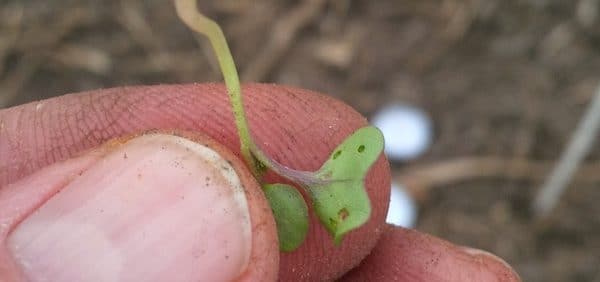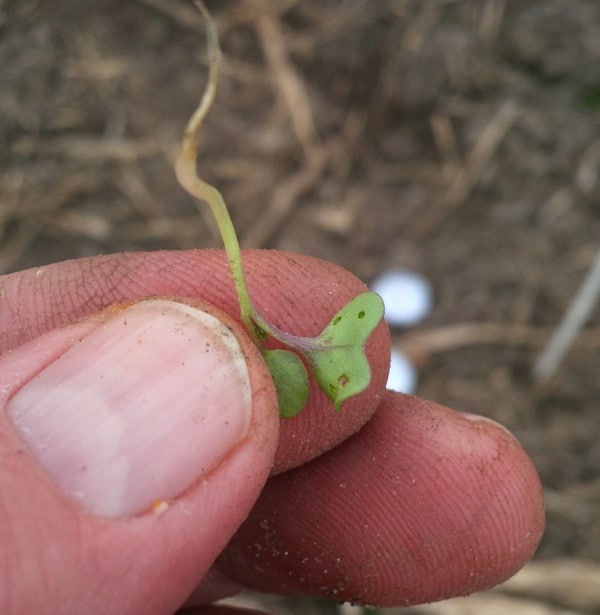From the road, many fields look clean this time of year, but look closer. Weed seedlings are often present at high numbers, and these seedlings will only get bigger. Now is a good time to control them, especially as days and nights get warmer.
Little benefit to waiting. If perennials, winter annuals and early emerging weeds are growing, there is no benefit to waiting for later emerging weeds such as lamb’s quarters or redroot pigweed to show up. Weeds present now will have a greater impact on yield than weeds that emerge with or after the crop.
The cold factor. While spraying earlier is a benefit, keep temperature in mind. When spraying after a morning frost or near-frost event, herbicide activity could be next to zero. Biological activity would have stopped during the night, and will not start up again until the plant warmed to at least 5°C — and even then it would be very slow. A few hours between 5°C and a daytime peak of 10°C would not be enough warmth to get plant metabolism going to a point where herbicide was all that effective, especially on a cloudy day. No biological activity means no herbicide activity.
Glyphosate applications work better:
—When temperatures are greater than 10°C, with the expectation that daytime highs will increase to greater than 15°C
—When nighttime lows are greater than 5°C (the warmer the better up to 10°C)
—Under bright sunshine (thin or sporadic clouds are also OK). Applications made in darkness or heavy cloud are less effective.
—With good quality water. Avoid water sources with hard water ions (Ca and Mg), iron, suspended clay or organic matter.
—After a shower. If leaves are dusty, application after a shower will improve control.
Once weather conditions have warmed, go ahead and spray. Waiting for ideal conditions isn’t a good strategy either. Early weed control with lower efficacy is generally preferable to no control at all or late control with higher efficacy — as long as weeds are present and not frost damaged.


